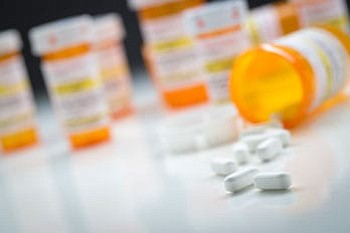Putting drug prices on TV will cause unnecessary patient panic
Style Magazine Newswire | 1/29/2019, 5:45 a.m.
By Sally C. Pipes
The Trump administration has proposed several reforms to drive down prescription drug prices.
One measure would force pharmaceutical companies to mention the sticker prices of their medicines in television advertisements. The new mandate covers all prescriptions drugs reimbursed by Medicare or Medicaid that cost more than $35 a month.
The administration hopes this change will empower patients to choose more affordable drugs and embarrass companies into reducing their prices. But the rule won't achieve those goals.
Instead, it would mislead customers into thinking drug prices are higher than they actually are. It could deter patients from asking doctors about medicines that would improve or save their lives.
The rule would require advertisements to announce drugs' "wholesale acquisition cost." That's the sticker price manufacturers set when they introduce products to market.
Pharmaceutical companies don't actually receive this amount; it's merely the starting point for pricing negotiations with health insurers, pharmacy benefit managers, and other middlemen in the supply chain. These negotiations result in substantial discounts. On average, manufacturers rebate one-third of a drug's sticker price back to payers. Often, discounts can cut 60 percent or more off the sticker price. In 2017 alone, manufacturers offered more than $150 billion in discounts and rebates.
Manufacturer discounts wouldn't be reflected in ads. So the price patients see on their screens would be substantially higher than the true, discounted price.
Even that discounted price doesn't represent what people pay at the pharmacy counter. Patients' out-of-pocket spending depends on their insurance plans, which detail their co-pays, co-insurance, deductibles, and so on. It's entirely possible that a patient could pay just a few dollars for a drug with a sticker price of hundreds, or even thousands, of dollars.
Forcing drug companies to announce unrepresentative list prices could actively harm patients' health. Beyond making patients anxious, sticker shock could prevent people from taking necessary medications.
As prices go up, patients are less likely to adhere to their prescriptions. Doubling patient copays reduces adherence by as much as 45 percent. If patients mistakenly believe they're going to spend a small fortune, they may never inquire about medicines that could keep them healthy.
Patients ought to be better informed about drug costs. But there's a better way to offer that transparency.
Drug manufacturers have proposed directing TV viewers to websites that provide detailed pricing breakdowns about drugs. Online, manufacturers have the space to provide essential details and more accurate price estimations that can't be squished into 30-second commercials.
The Trump administration's new advertising proposal is well-intentioned -- but it's likely to scare people away from needed medications. Officials would be wise to shelve the rule.
Sally C. Pipes is President, CEO, and Thomas W. Smith Fellow in Health Care Policy at the Pacific Research Institute. Her latest book is The False Promise of Single-Payer Health Care (Encounter 2018). Follow her on Twitter @sallypipes.




